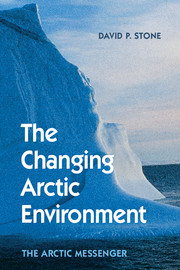Book contents
- Frontmatter
- Dedication
- Contents
- Acknowledgements
- Acronyms
- 1 Personal Beginnings
- PART I THE CHANGING ARCTIC
- PART II WORKING TOGETHER
- PART III WHAT IS THE PRESENT STATE OF KNOWLEDGE?
- PART IV WHAT DOES ALL THIS MEAN?
- Appendix I The Intergovernmental Panel on Climate Change (IPCC)
- Appendix II What Will Happen in the Future If We Do Nothing or If We Try Very Hard to Aggressively Reduce GHG Emissions: Projected Change Under Different Emission Scenarios
- Appendix III Some Geophysical Background Notes Related to Climate and Weather
- Appendix IV Orbital Forcing
- Appendix V The Concept of Commitment
- Bibliography
- Credits
- Index
Appendix II - What Will Happen in the Future If We Do Nothing or If We Try Very Hard to Aggressively Reduce GHG Emissions: Projected Change Under Different Emission Scenarios
Published online by Cambridge University Press: 05 February 2015
- Frontmatter
- Dedication
- Contents
- Acknowledgements
- Acronyms
- 1 Personal Beginnings
- PART I THE CHANGING ARCTIC
- PART II WORKING TOGETHER
- PART III WHAT IS THE PRESENT STATE OF KNOWLEDGE?
- PART IV WHAT DOES ALL THIS MEAN?
- Appendix I The Intergovernmental Panel on Climate Change (IPCC)
- Appendix II What Will Happen in the Future If We Do Nothing or If We Try Very Hard to Aggressively Reduce GHG Emissions: Projected Change Under Different Emission Scenarios
- Appendix III Some Geophysical Background Notes Related to Climate and Weather
- Appendix IV Orbital Forcing
- Appendix V The Concept of Commitment
- Bibliography
- Credits
- Index
Summary
The ultimate cause of our present climate warming is the massive input of greenhouse gases (GHGs) to the atmosphere due to human activity over the last 200 or more years. Intergovernmental Panel on Climate Change (IPCC) AR4 and AR5 confirm the high level of confidence of the global scientific community in making this statement. However, the future is still largely in our hands. We have already injected so much carbon dioxide into the atmosphere to commit the globe to a certain degree of warming. Nevertheless, it is still just possible that actions taken today could limit the amount of warming to be not far from the range within which our civilizations have developed. What will happen next depends entirely on how our energy-driven world economies evolve. Therefore, to look into the future, we have to combine scenarios for global economic development and then calculate what their individual climate impact may be. The first step has been to quantify the relationship between carbon dioxide emission and variables indicative of how economies and societies may evolve over the next 100 years. The following are examples of these variables (which for simplicity only consider CO2):
• Global population level (GPL): The higher the population, the greater the global demand is for energy.
• Global prosperity (GP): A convergence of global prosperity towards that enjoyed by the more developed world economies will be driven by energy.
• The level of energy intensity (EI): This is the rate of energy use per unit of economic activity. Economic activities vary in their demand for energy.
• The emission level (EL) of carbon dioxide per watt of energy: Some energy sources vary considerably in their emission of carbon dioxide and some produce no GHG emissions. Even within the fossil fuel category, there is considerable variation. For example, natural gas releases far less carbon dioxide than coal or tar (oil) sands. It is sad and ironic that at present, Canada is vigorously promoting the latter energy source.
- Type
- Chapter
- Information
- The Changing Arctic EnvironmentThe Arctic Messenger, pp. 309 - 313Publisher: Cambridge University PressPrint publication year: 2015



